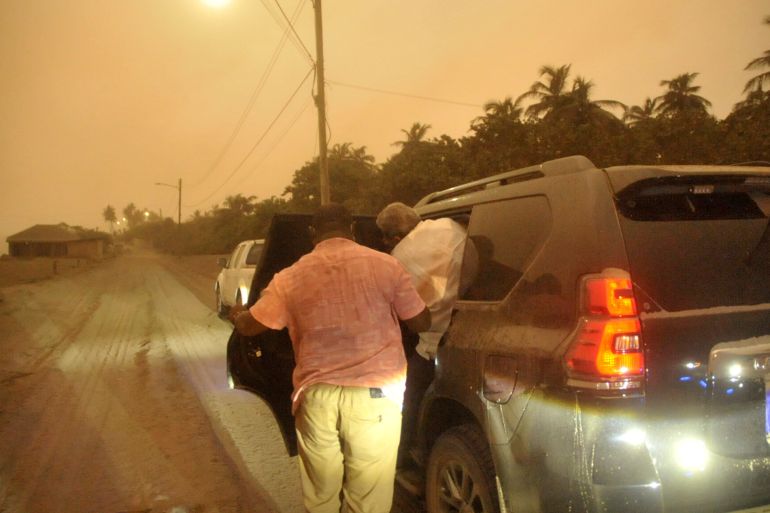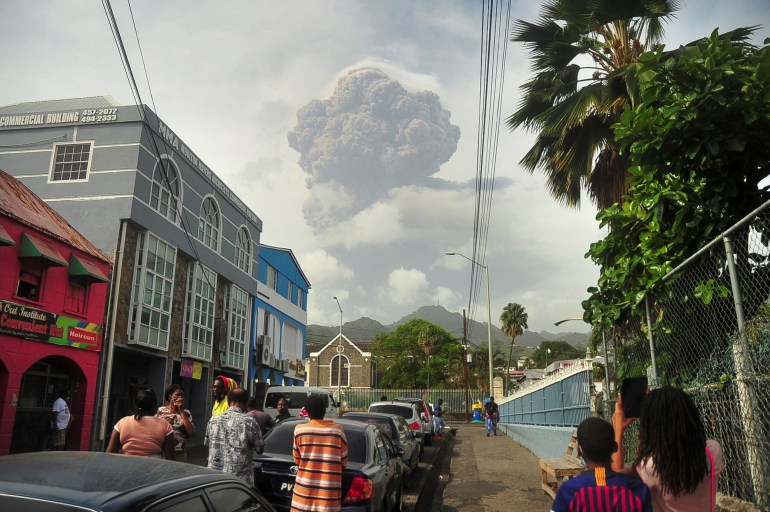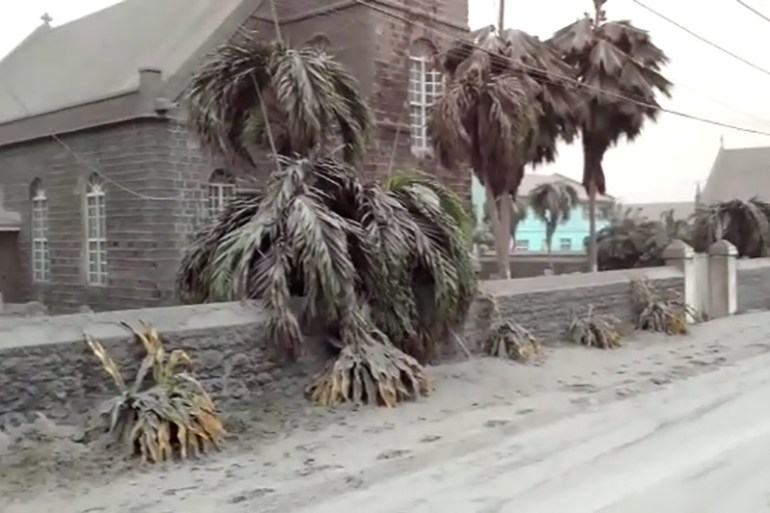St Vincent volcano: New ‘explosive event’ causes power cuts
‘Lightning, thunder and rumblings’ reported as evacuations continue on the Caribbean island of St Vincent and the Grenadines.

A new “explosive event” has been reported at a volcano on the Caribbean island of St Vincent and the Grenadines which erupted on Friday, shaking the ground and blanketing the island in a layer of fine volcanic rock.
After decades of inactivity, the volcano erupted spewing dark clouds of ash some 10km (6 miles) into the air and prompting an evacuation of some residents living nearby.
Keep reading
list of 3 itemsSaint Vincent awaits more volcanic eruptions as help offered
Volcano on Caribbean’s St Vincent erupts, spews ash and smoke
On Saturday, eruption with rumbling noises emanating from the La Soufriere continued as Prime Minister Ralph Gonsalves ordered the evacuation of residents close to the activity.
The country’s National Emergency Management Organization (NEMO) noted “another explosive event” early on Sunday morning with the “majority of the country out of power and covered in ash”.
“Lightning, thunder and rumblings. Majority of the country out of power and covered in ash,” it added.
Visibility in some areas of the island was extremely limited on Saturday, while in the capital city Kingstown on the south of the island – the volcano is in the north – the ash caused a thin haze of dust, reports said.
“I’m just here wondering when it’s going to calm down,” resident Kalique Sutherland told The Associated Press news agency.
Approximately 16,000 people lived in areas under evacuation orders as of Saturday and more than 3,000 people spent the night in shelters that have imposed limits on the number of evacuees they take due to COVID-19 protocols.
In a Facebook post on Sunday morning local time, the Seismic Research Centre at the University of the West Indies said tremors lasting up to 20 minutes had been recorded over the previous 12 hours, at intervals of between 90 minutes and three hours.
The centre said ashfall had been reported in most areas of the island overnight, as well as on the neighbouring islands of Barbados and St Lucia.

“Explosions and accompanying ashfall, of similar or larger magnitude, are likely to continue to occur over the next few days,” the post read.
The ash has forced the cancellation of several flights, and poor visibility limited evacuations in some areas.
Officials warned that Grenada to the south also could get light ashfall, though most of it was expected to head northeast into the Atlantic Ocean.
The thick dust was also on the move, travelling 175km (110 miles) to the east and starting to affect the neighbouring island of Barbados.
“Barbadians have been urged to stay indoors as thick plumes of volcanic ash move through the atmosphere,” the Caribbean Disaster Emergency Management Agency said.
St Vincent and the Grenadines, which has a population of more than 100,000, has not experienced volcanic activity since 1979, when an eruption caused damage estimated at approximately $100m.

An eruption by La Soufriere in 1902 killed more than 1,000 people. The name means “sulphur outlet” in French.
Elford Lewis, a 56-year-old farmer who evacuated his home on Sunday morning, said the ongoing eruption is worse than the one in 1979.
“This one is more serious,” Lewis, who witnessed the big eruption decades ago, told AP.